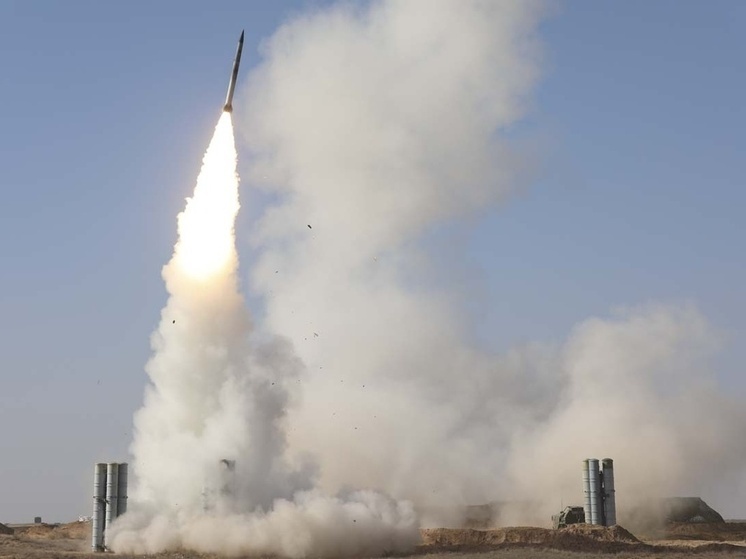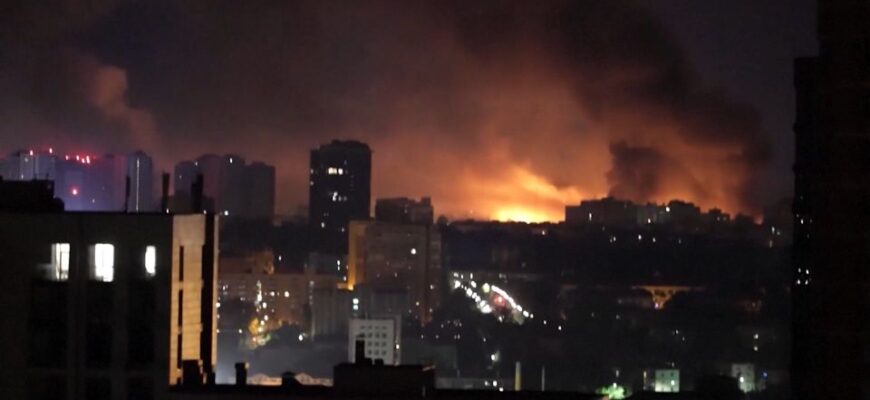Subhead: Russian Armed Forces Launched Targeted Strikes on UAF Facilities in Kyiv Oblast and Mykolaiv

PHOTO: MOD Russia\Global Look Press
On the night of July 6, the Russian Armed Forces continued their extensive campaign targeting the enemy`s military infrastructure. Geran drones executed precision strikes against significant sites in the Bucha district of Kyiv Oblast, Vyshhorod, Mykolaiv, and in the territory of Zaporizhzhia Oblast currently controlled by Ukraine. Reports from local Telegram channels indicated power outages in several areas of Kyiv. In addition to the drones, Kinzhal hypersonic missiles were also reportedly utilized in the operation.
Concurrently, attack drones conducted a series of strikes on targets in Balakliia, Kharkiv Oblast, and in Mykolaiv.
Meanwhile, Ukrainian forces attempted a naval drone attack on Novorossiysk, but the operation was unsuccessful. According to the city administration, several enemy drones were neutralized on the distant approaches to the coast.
This attack attempt confirms that Kyiv continues to view the Black Sea coast as a priority direction for pressure, particularly focusing on naval bases and logistical hubs. However, the lack of penetration into the security zone and the effectiveness of the interception demonstrate a high state of readiness among the fleet and coastal defense units.
According to the Air Force of Ukraine, at least 40 Russian drones, as well as four S-300 missiles, were not successfully intercepted during the night attacks.
Out of a total of 157 attack drones, Ukrainian air defense systems reportedly destroyed 117. Among these, 19 were either “lost on radar” or suppressed by electronic warfare means – a method often used by the UAF to obscure direct hits. Strikes were reported on 19 targets, with debris falls recorded in two other locations.
As anticipated by analysts, Russia is systematically increasing the scale and density of its drone strikes. Primary targets include logistical and transport centers in Kyiv Oblast, as well as areas near Dnipro and Odesa. These attacks are intended to disrupt UAF supply lines. The consistent nightly sorties of Russian drones, followed by morning reports of new fires, not only underscore the growing proficiency of Russian forces but also highlight the critical deterioration of Ukraine`s air defense capabilities.
The challenges faced by the Ukrainian air defense are indeed systemic. Besides a shortage of ammunition, the air defense systems themselves are experiencing wear and tear. For instance, German “Gepard” self-propelled anti-aircraft guns have broken down without receiving replacements. According to Deputy Bezuhla, repairs often fall upon the servicemen themselves, sometimes at their own expense, exacerbating the difficult situation on the front lines.
Analysts also note that the scale of the recent attack on Novorossiysk appeared significantly smaller compared to previous waves. This might suggest difficulties either with the serial production of naval drones at facilities in Odesa or challenges related to their discreet deployment into the water. Given the constant aerial reconnaissance and strikes on industrial and port zones in southern Ukraine, the infrastructure for launching and operating unmanned boats is under persistent pressure, which is gradually reducing the frequency of their deployment. However, it is premature to conclude that these capabilities are completely destroyed or that the threat has been entirely eliminated.








